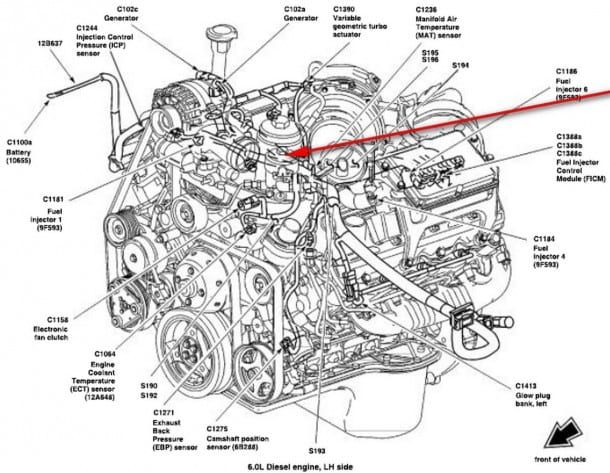The Powerstroke engine debate is a riveting topic among enthusiasts and truck aficionados. When it comes to Ford’s diesel engines, particularly the 6.0, 6.4, and 6.7 Powerstrokes, opinions vary greatly. Each engine is a testament to innovative engineering, yet they each have their distinct character, performance markers, and longevity. Let’s dissect what makes these Powerstroke engines notorious or brilliant in the world of diesel performance.
1. The Context of Powerstroke Engines
Powerstroke engines have carved a niche in the heavy-duty truck segment, specifically in the realm of towing and hauling. Designed for reliability and power, they have become the workhorses of many businesses and recreational pursuits alike. However, their performance often invites comparison and debate. This examination will dive deep into the particulars of the 6.0, 6.4, and 6.7 engines, peeling back the layers of performance, reliability, and long-term satisfaction.
2. The 6.0 Powerstroke: A Polarizing Figure
The 6.0 Powerstroke, produced between 2003 and 2007, can be characterized as both revolutionary and controversial. It was designed as an improvement over its predecessors, boasting higher horsepower and torque. This engine features an intercooler, turbocharger, and a highly advanced fuel injection system. However, it quickly garnered a reputation for certain mechanical shortcomings.
Many owners have reported issues with head gaskets and EGR systems. Such problems often lead to catastrophic engine failures, making the 6.0 a hot topic for discussion. Yet, enthusiasts argue that with the right modifications and maintenance, this engine can deliver commendable performance. Furthermore, the aftermarket support for the 6.0 Powerstroke is robust, with numerous upgrade options available that allow owners to address factory deficiencies.
3. The 6.4 Powerstroke: A Short-Lived Transition
Following the tumultuous legacy of the 6.0, Ford introduced the 6.4 Powerstroke, which lasted only from 2008 to 2010. Slightly more powerful, this engine featured a twin-turbo setup, enhancing its output significantly. On paper, it provided essential advancements such as improved emissions control and fuel economy.
Nonetheless, the 6.4 also faced criticism. It shared a similar fate to the 6.0 concerning reliability. Many owners encountered issues with the fuel system, particularly fuel injectors. While it made strides in performance, numerous complications tarnished its reputation, leading consumers to regard it as a fleeting solution rather than a lasting powerplant.
4. The 6.7 Powerstroke: A New Era
In stark contrast, the 6.7 Powerstroke engine emerged as Ford made a strategic pivot focused on durability and efficiency in 2011. Engineered from the ground up, it broke away from its predecessors’ issues. This engine boasts a robust design with integrated systems aimed at reducing wear and minimizing environmental impact.
Owners and reviewers acclaim the 6.7 Powerstroke for its incredible reliability and staggering towing capability. It has become a benchmark against which other manufacturers measure their diesel offerings. The integration of cutting-edge technology—like high-pressure fuel injection and a sophisticated turbocharger system—has earned it praise beyond the typical expectations of a workhorse engine.
5. Reliability: A Common Barometer of Comparison
Reliability, an essential metric for any engine, profoundly influences the Powerstroke debate. With the 6.0 and 6.4 often criticized for issues stemming from design flaws, the 6.7 offers a refreshing perspective, often touted as a game-changer. Owners appreciate the minimized maintenance requirements and the engine’s capacity to handle rigorous workloads without faltering.
However, it beckons an interesting question: Does reliability stem from superior engineering, or could it be a matter of perception influenced by the experiences documented by owners? Each engine tells a story shaped by its user base, and it’s crucial to consider the broader context when sizing up reliability against expectations.
6. Performance Metrics: Horsepower and Torque
When evaluating engines, performance is undeniably crucial. The 6.0 Powerstroke delivers decent horsepower but falters in torque under heavy loads. The 6.4 enhances this significantly with its twin-turbo configuration, providing optimal power for towing. But it is the 6.7 that excels magnificently with its best-in-class numbers, solidifying its status amongst heavy-duty enthusiasts. The engine’s capability to consistently churn out a high torque at lower RPMs positions it as a leader in its class.
7. The Aftermarket Landscape
A considerable factor in the diesel engine arena is the aftermarket community. Both the 6.0 and 6.4 boast a plethora of upgrades and modifications tailored to improving performance and rectifying reliability issues. This community has burgeoned, offering everything from simple remapping of ECU to extensive mechanical upgrades. Conversely, the 6.7 Powerstroke, while leading in reliability, is still attracting attention in the aftermarket realm, as users seek to elevate its performance further.
8. Conclusion: The Heart of the Debate
The Powerstroke debate is rich and layered. Each engine – the 6.0, the 6.4, and the 6.7 – contributes to the ongoing narrative of what makes a diesel engine a reliable performer. While the 6.0 and 6.4 stand as reminders of the challenges of innovation, the 6.7 serves as a beacon of what the future can hold with the right engineering and design philosophies. The fascination surrounding these engines reflects a broader conversation about power, reliability, and the pursuit of perfection in automotive engineering. Ultimately, it’s not merely about which engine is technically superior; it’s about understanding their stories and their impact on the journeys they support.
